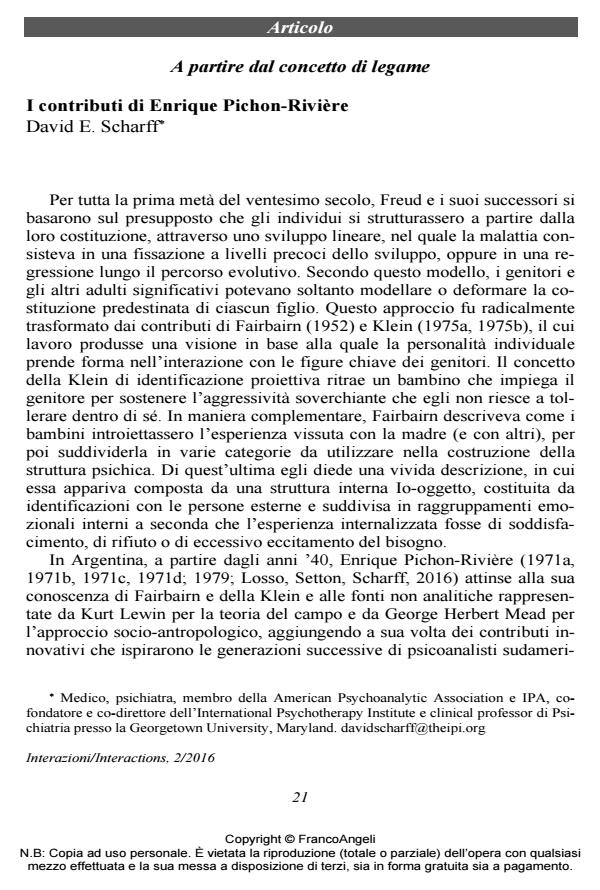The contributions of Enrique Pichon-Rivière
Journal title INTERAZIONI
Author/s David E. Scharff
Publishing Year 2016 Issue 2016/2
Language Italian Pages 7 P. 21-27 File size 149 KB
DOI 10.3280/INT2016-002003
DOI is like a bar code for intellectual property: to have more infomation
click here
Below, you can see the article first page
If you want to buy this article in PDF format, you can do it, following the instructions to buy download credits

FrancoAngeli is member of Publishers International Linking Association, Inc (PILA), a not-for-profit association which run the CrossRef service enabling links to and from online scholarly content.
Enrique Pichon-Rivière, a pioneer of psychoanalysis, worked and wrote in Argentina in the mid-twentieth century, but his work has not so far been translated into English or Italian. From the beginning, Pichon-Rivière understood the social applications of analytic thinking, centring his ideas on "el vinculo" or "vincular", generally translated as "the link", but could equally be translated as "bond" or "to bond". The concept that each individual is born into human social links, is shaped by them, and simultaneously contributes to them inextricably ties persons’ inner worlds to the social world of family and society in which they live. Pichon-Rivière believed therefore that family analysis and group and institutional applications of analysis were as important as individual psychoanalysis. Many of the original family and couple therapists from whom our field learned trained with him. Because his work was centred in the analytic writings of Fairbairn and Klein, as well as those of the anthropologist George Herbert Mead and the field theory of Kurt Lewin, his original ideas have important things to teach us today. This article summarises some of his central ideas such as the link, spiral process, the single determinate illness and the process of therapy.
Keywords: Vinculo, link, bond, spiral process, family therapy, operative group.
David E. Scharff, I contributi di Enrique Pichon-Rivière in "INTERAZIONI" 2/2016, pp 21-27, DOI: 10.3280/INT2016-002003